Editor’s Note: This post is written by a member of LTV’s sponsored content team, The Leisure Explorers. Do you own a Leisure Travel Van and enjoy writing? Learn more about joining the team.
Riding an Iron Horse of a Different Color
In the winter of 2022, we tried something new from our home state of Michigan, forsaking our favorite snowbird destination, Florida, for Arizona and California. We’ve taken you along to Texas and New Mexico, and our story continues in Arizona, where we’ve been nearly a week, first at Chiricahua National Monument and Kartchner Caverns in the southeast, then living among the saguaros in the Tucson area near Saguaro National Park. Now we’re heading north of Phoenix toward Sedona in “Lucky Us,” our 2015.5 Unity Murphy Bed, getting ready to board the Verde Canyon Train on recommendation from our LTV friends Bob Freese and Peggy Schafer.
If you haven’t read the other parts of this trip, you can read them here.
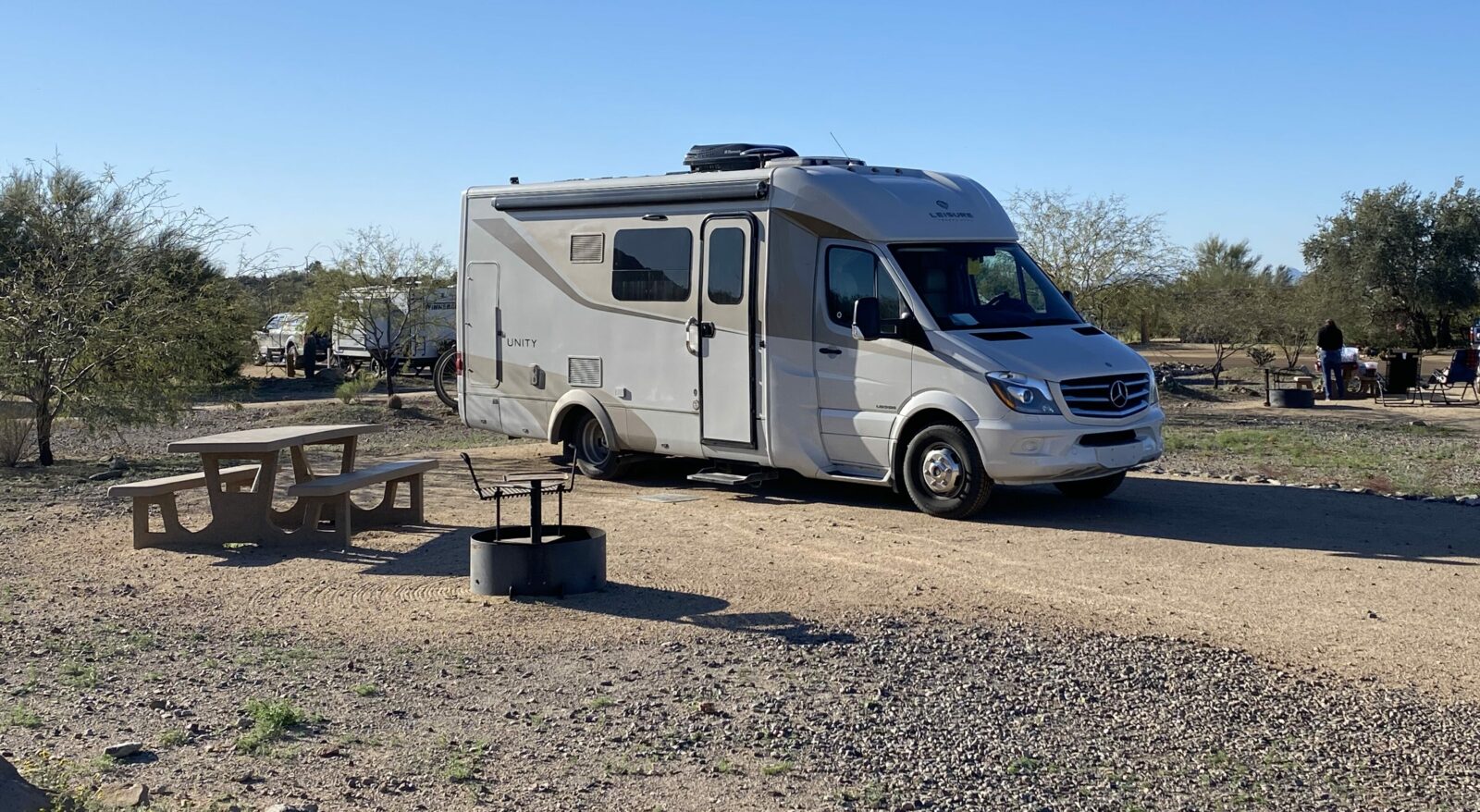
All Aboard!
The Verde Canyon Railroad takes you on a four-hour, 20-mile journey from Clarkdale to Perkinsville and back through Arizona’s “other Grand Canyon” along the Verde River to discover 110 years of history while riding the vintage quarter-mile passenger train pulled by two FP7 locomotives the last of only 10 remaining in North America.
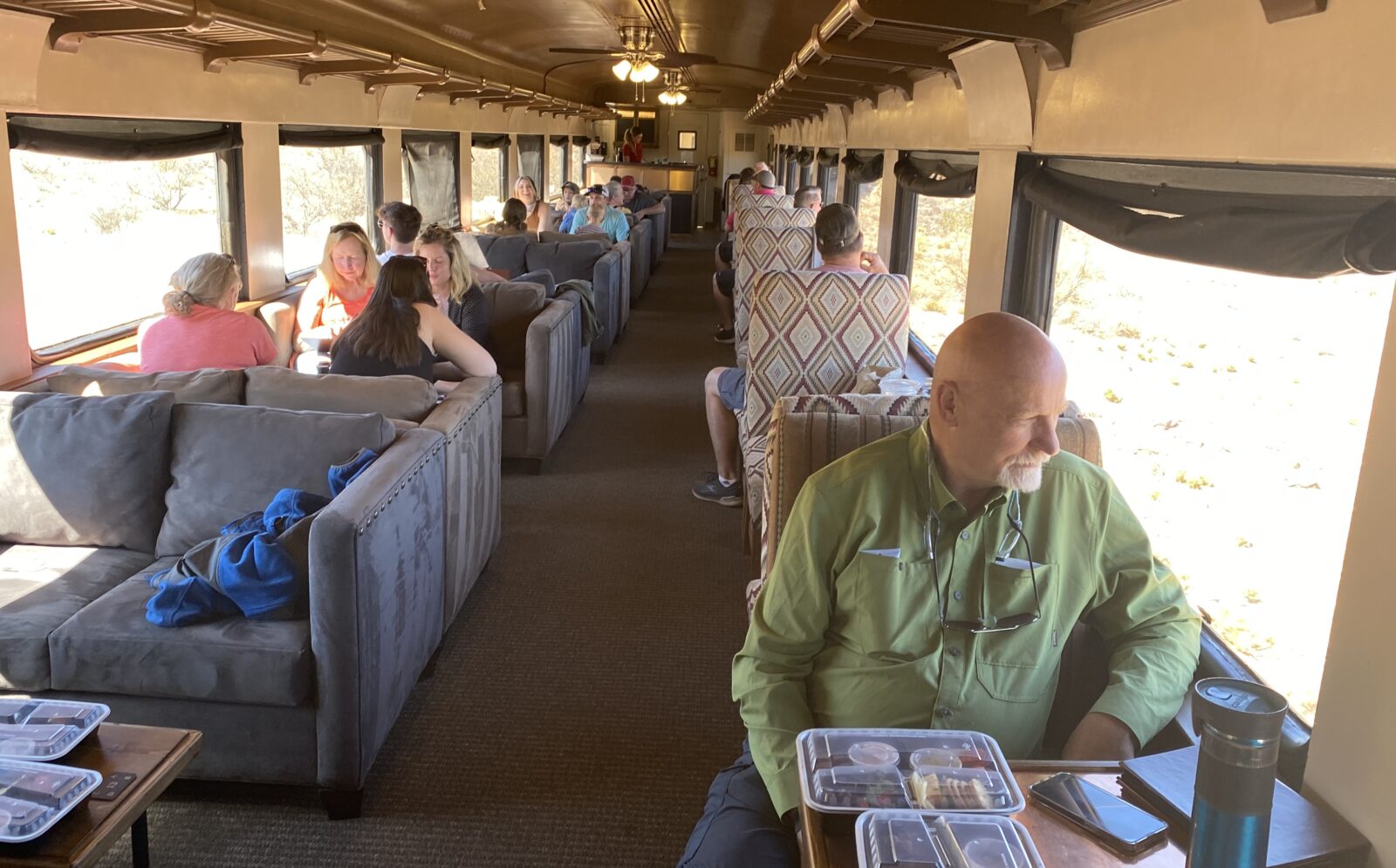
With reserved seats in one of 11 passenger cars, you’ll sit comfortably while being served a complimentary champagne toast and appetizers. We pre-ordered a sandwich, but really, after receiving the box of appetizers, we realized that would have been enough to eat. If the journey isn’t stunning enough from your seat in the passenger car, you’ll have the option of walking to the open-air viewing car, where you’ll hear a seasoned guide point to various geological features and wildlife of this high desert canyon.
The tracks, completed in 1912, were built when there was a need for a rail line to transport copper from mining operations in Jerome to the world. The rail, owned and operated by the Santa Fe Railway from 1912 to 1988, was revived by an entrepreneur with a vision, who opened the Verde Canyon Railroad in 1990, with more than three million passengers enjoying the ride since. The vintage iron horses joined the operation in 1997.
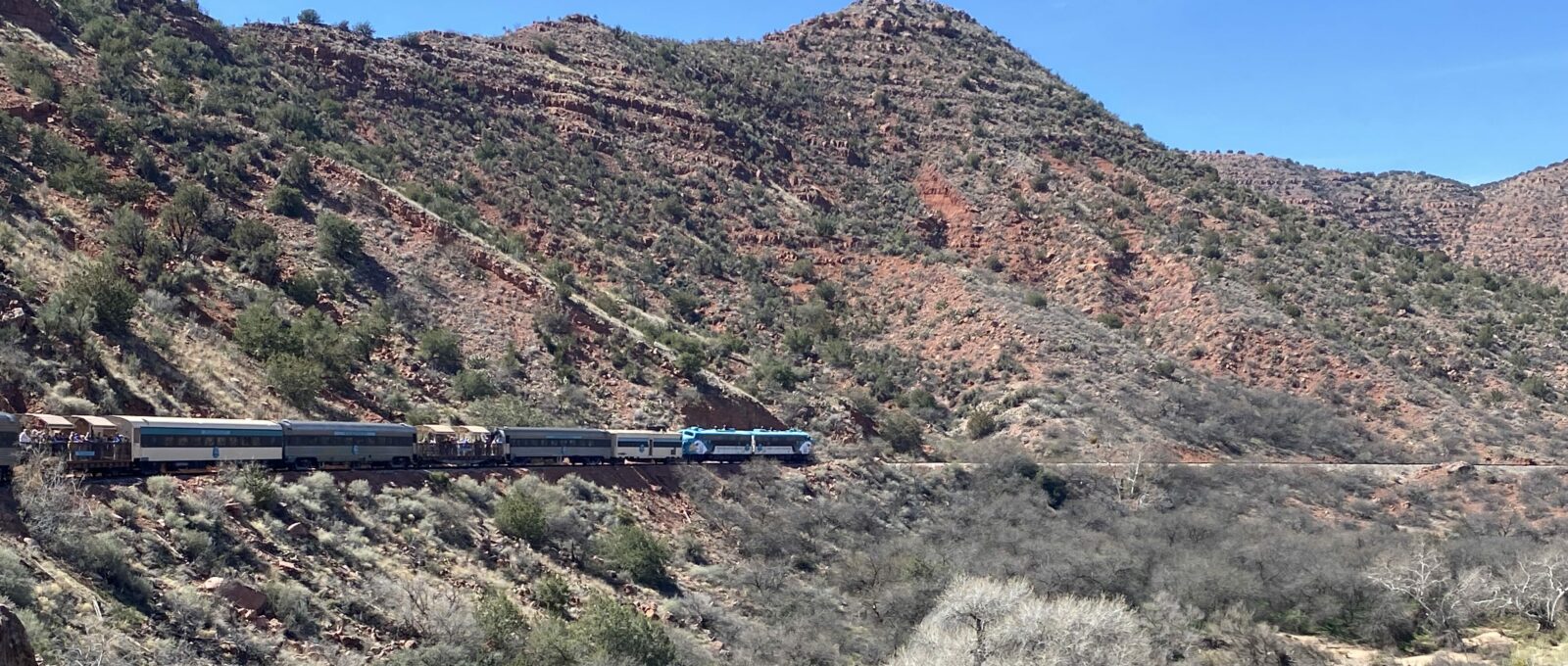
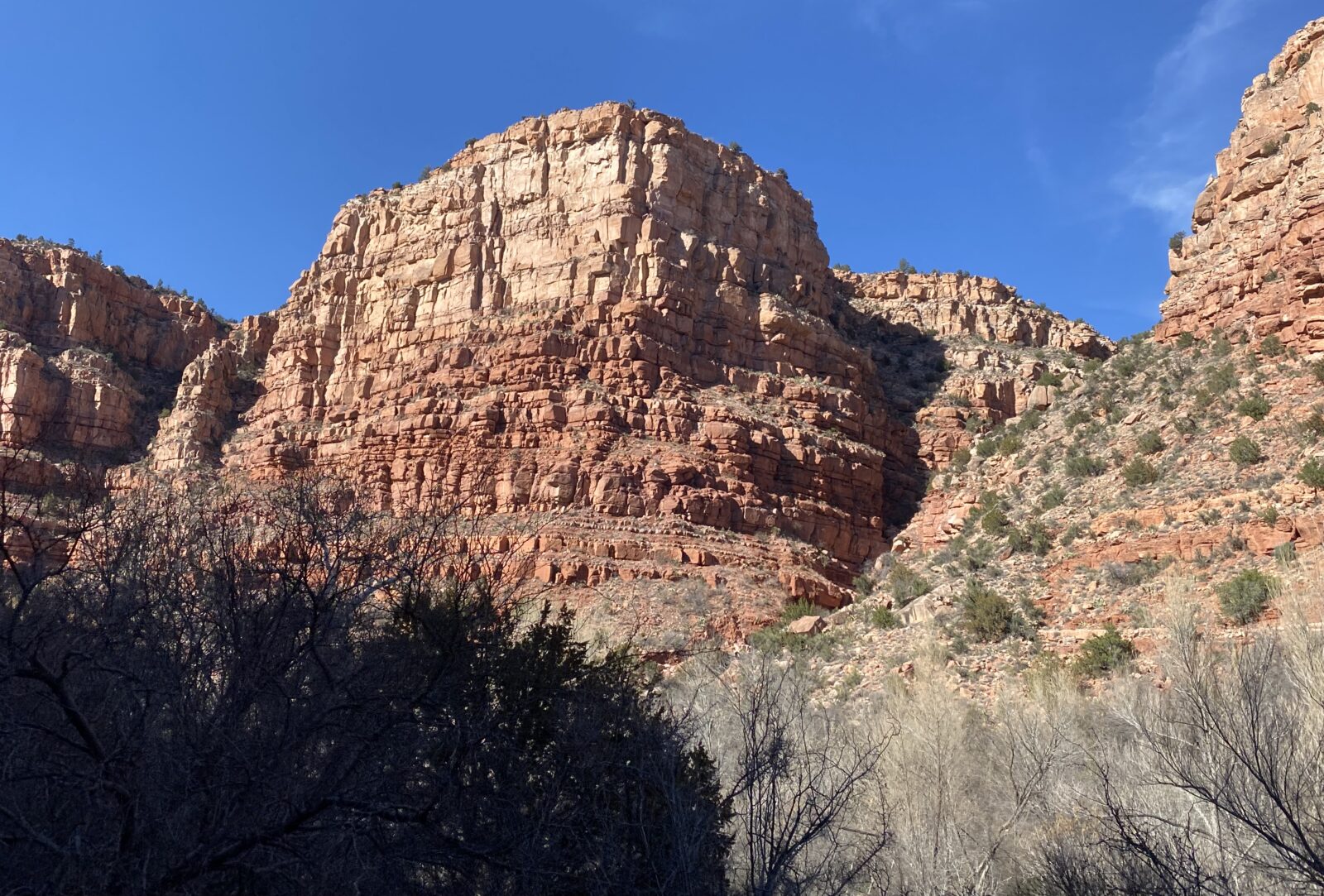
Nearby Sedona is about a 30-minute ride from Clarkdale; you might want to add that to your travels. From Sedona, it’s a beautiful winding drive north to Flagstaff. Since we had already visited Sedona, we stuck to our plan–return to Phoenix and head west toward California. We did make a few stops along the way.
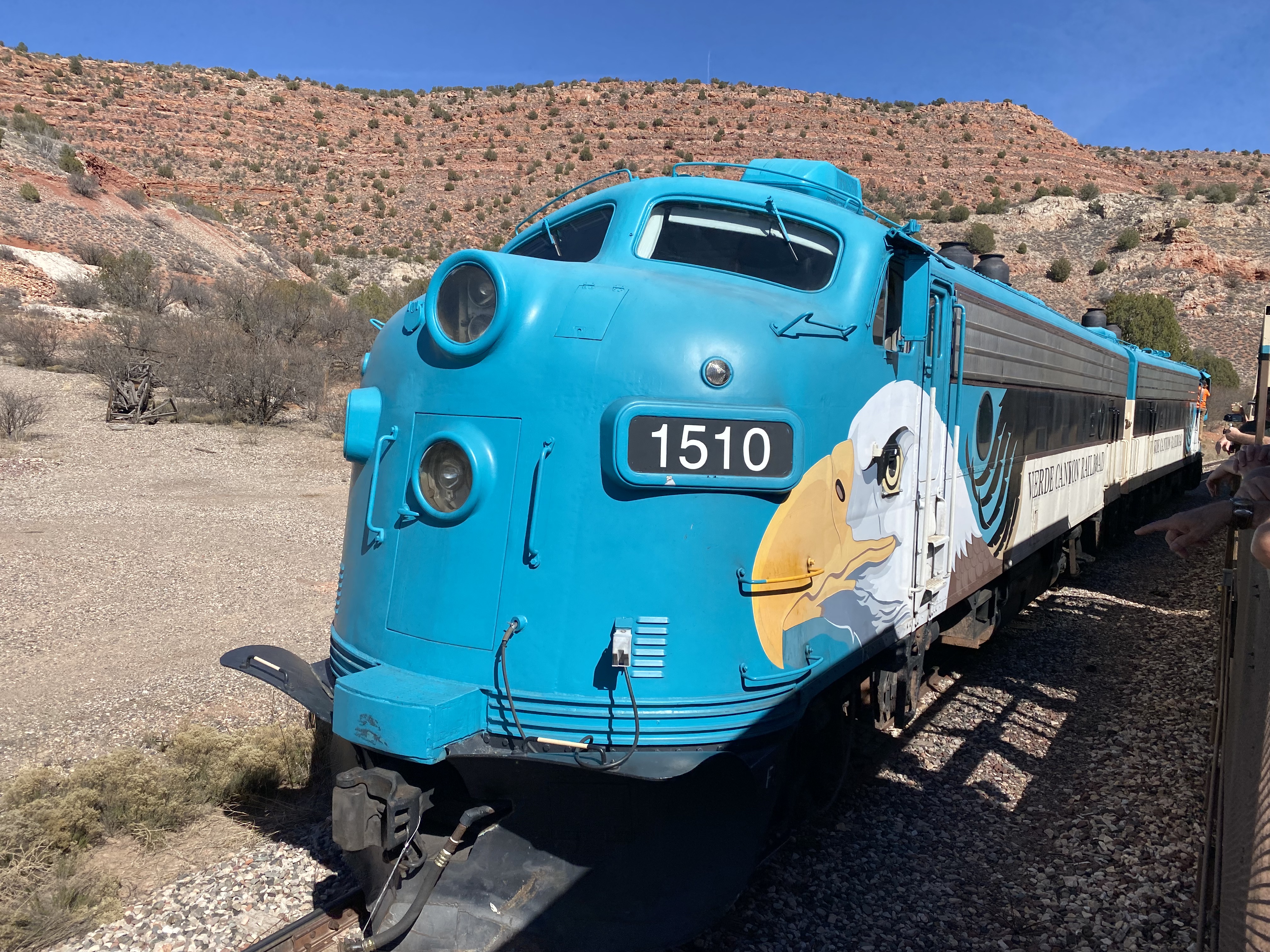
Another Horse, This Time a Park
After our train ride, we set up camp at Dead Horse Ranch State Park in Cottonwood, within the Verde River Valley corridor. With 100 campsites and 20 miles of mixed-use trails, you can explore more of the high desert here to see mammals, reptiles, and birds unique to the area, including River Otter, Grey Fox, and Gambel’s Quail, which can identified by its distinctive forward-facing crest on their heads. If you have time, take a wrangler-guided trail ride on a horse at the equestrian center. This overnight stop is convenient if you visit area attractions, including Tuzigoot National Monument, just six miles away, or heading to Phoenix or Sedona.
A Prehistoric Pueblo
Thousands of years ago, people began building a hilltop pueblo that grew into one of the largest villages in the area. At Tuzigoot National Monument, you can explore a 110-room village to see some prehistoric life in central Arizona. A self-guided 1/3-mile loop trail leads you through the village, estimated to be home to several hundred people for several hundred years. Sometime in the 1300s, the inhabitants left, and the pueblo stood vacant until it was excavated by American archeologists and opened as a national monument in 1939.
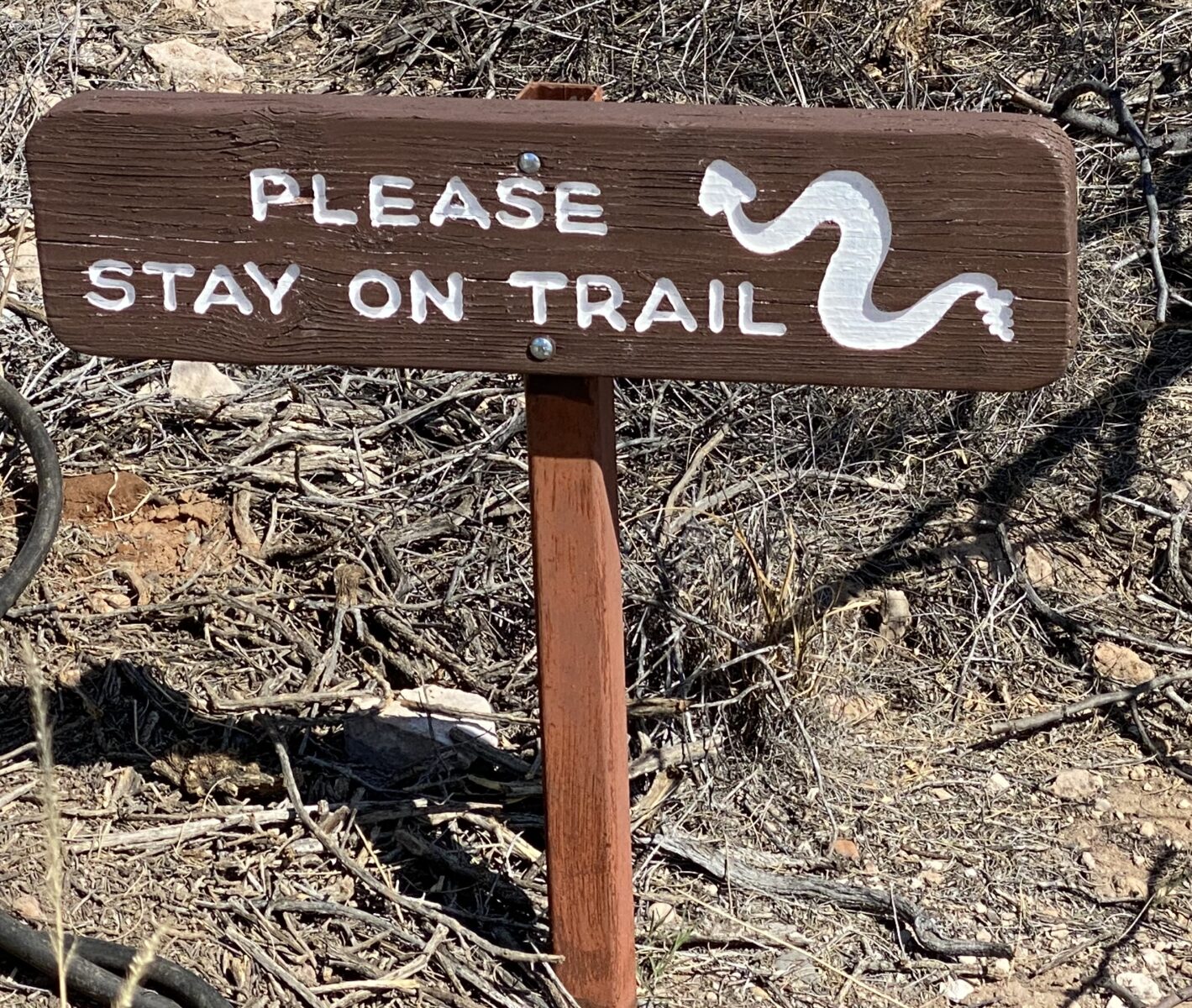
About a half hour away lies Montezuma Castle National Monument, where you can take a self-guided, 1/3-mile loop trail past a five-story cliff dwelling. We missed this monument as the day we were there, RV’s weren’t permitted on the road to the monument after 10:00 am due to busses and traffic considerations–next time.
Other Attractions
Phoenix is about two hours south of Cottonwood and the Tuzigoot National Monument. If you spend time in the Phoenix area, we suggest hiking at White Tank Mountain Regional Park and visiting the Deer Valley Petroglyph Preserve, as well as the Desert Botanical Garden.
Next Up: Heading to Quartzite and Joshua Tree National Park, then to our final destination–California!



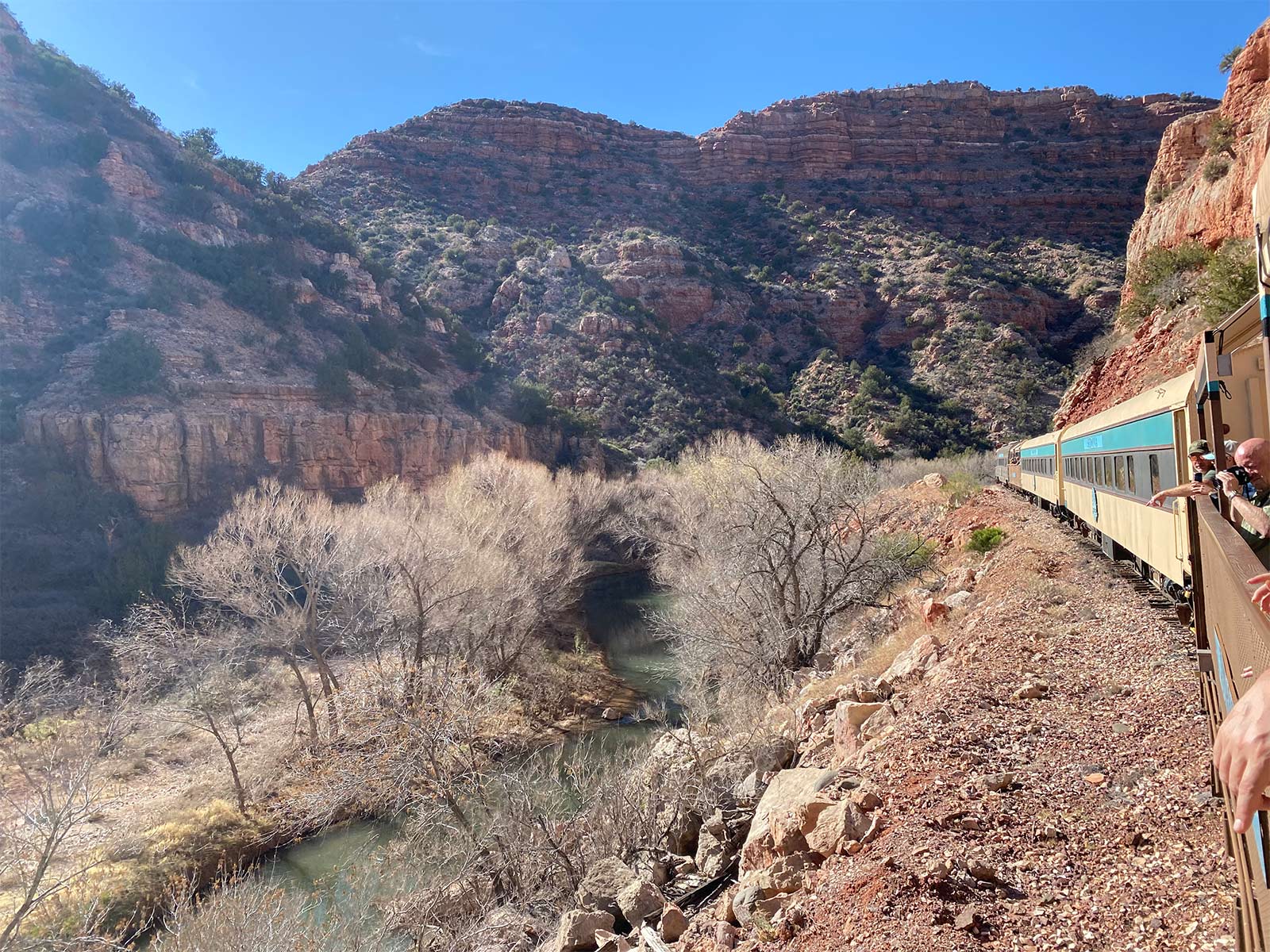
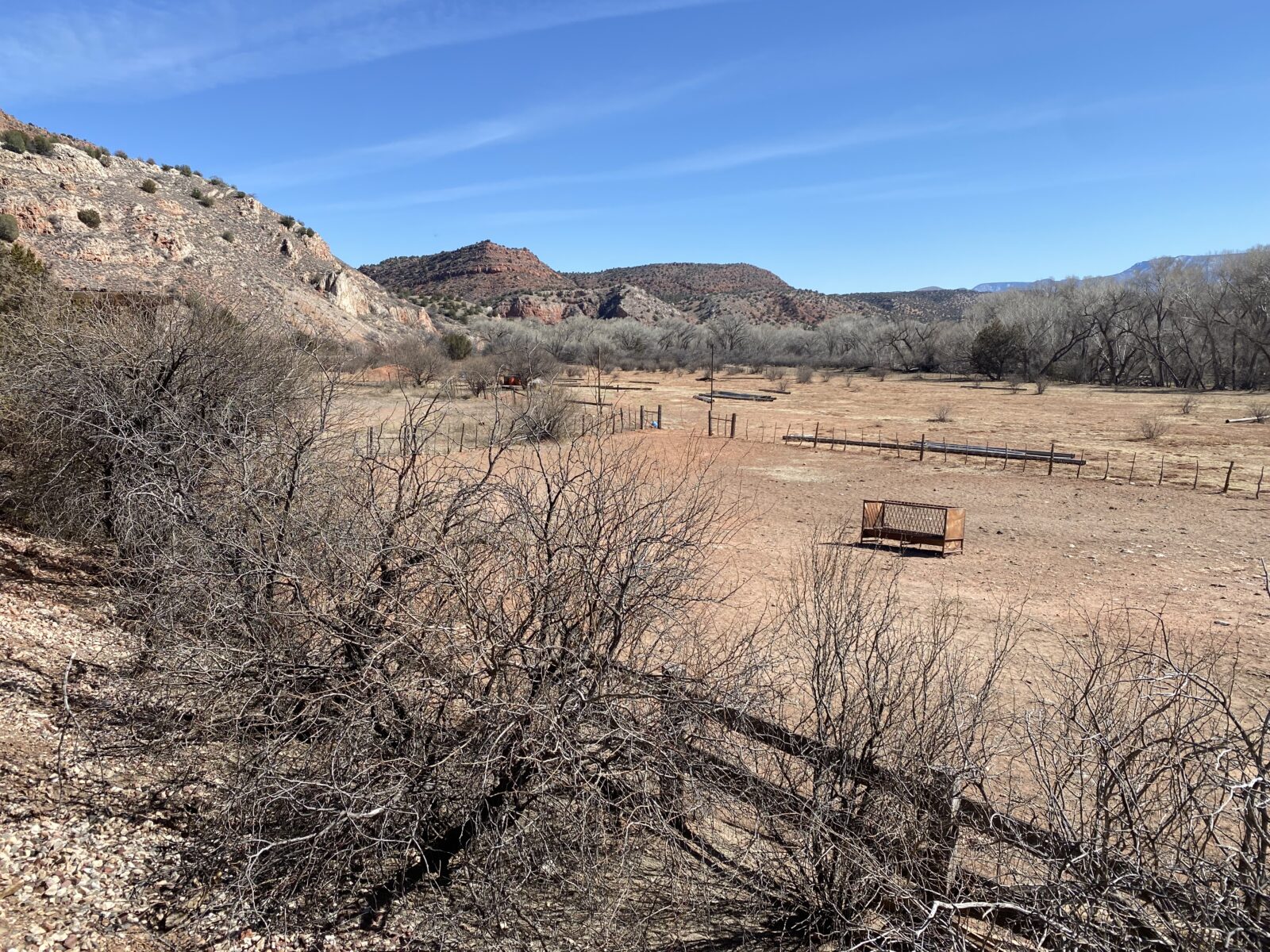
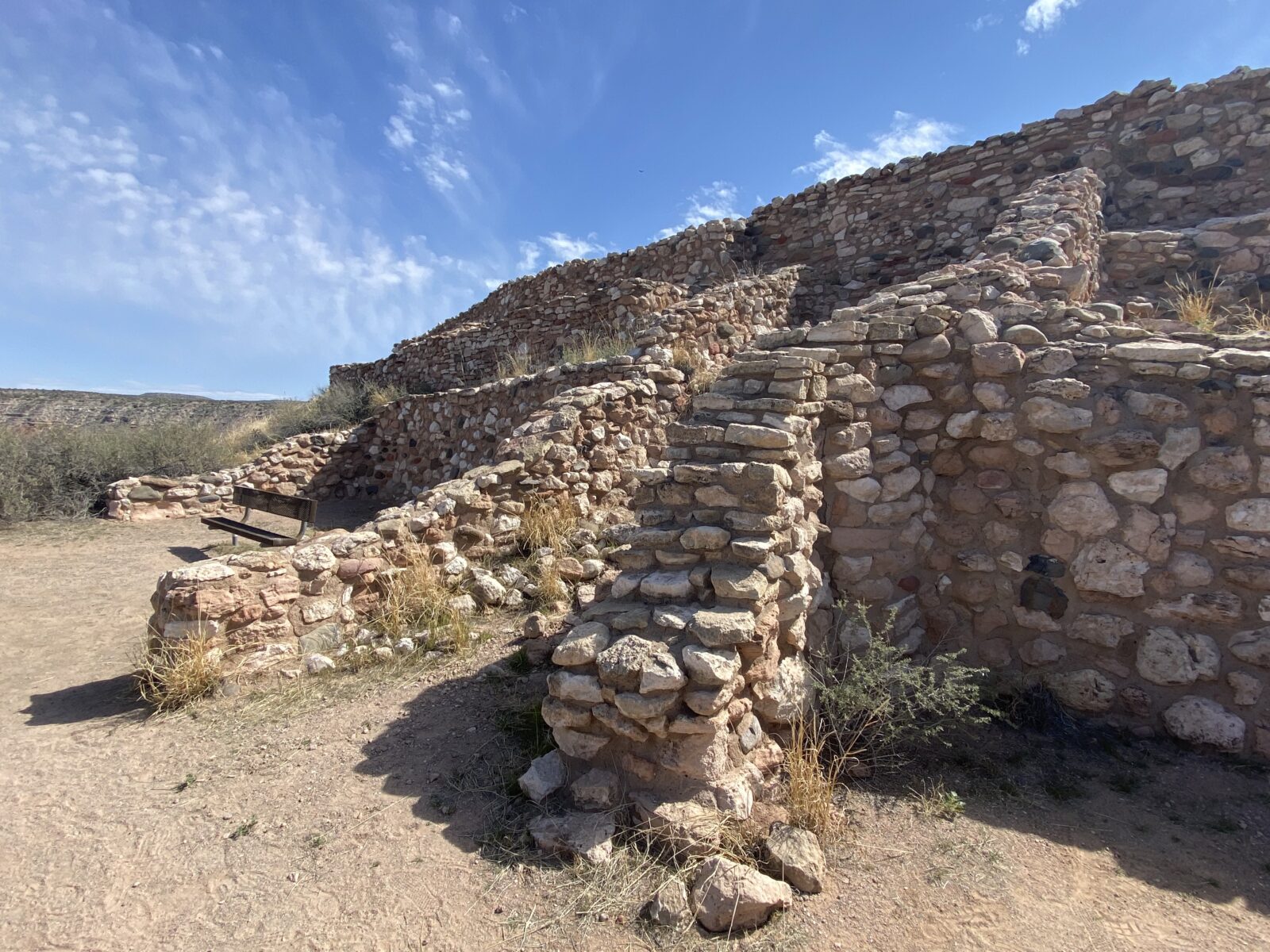
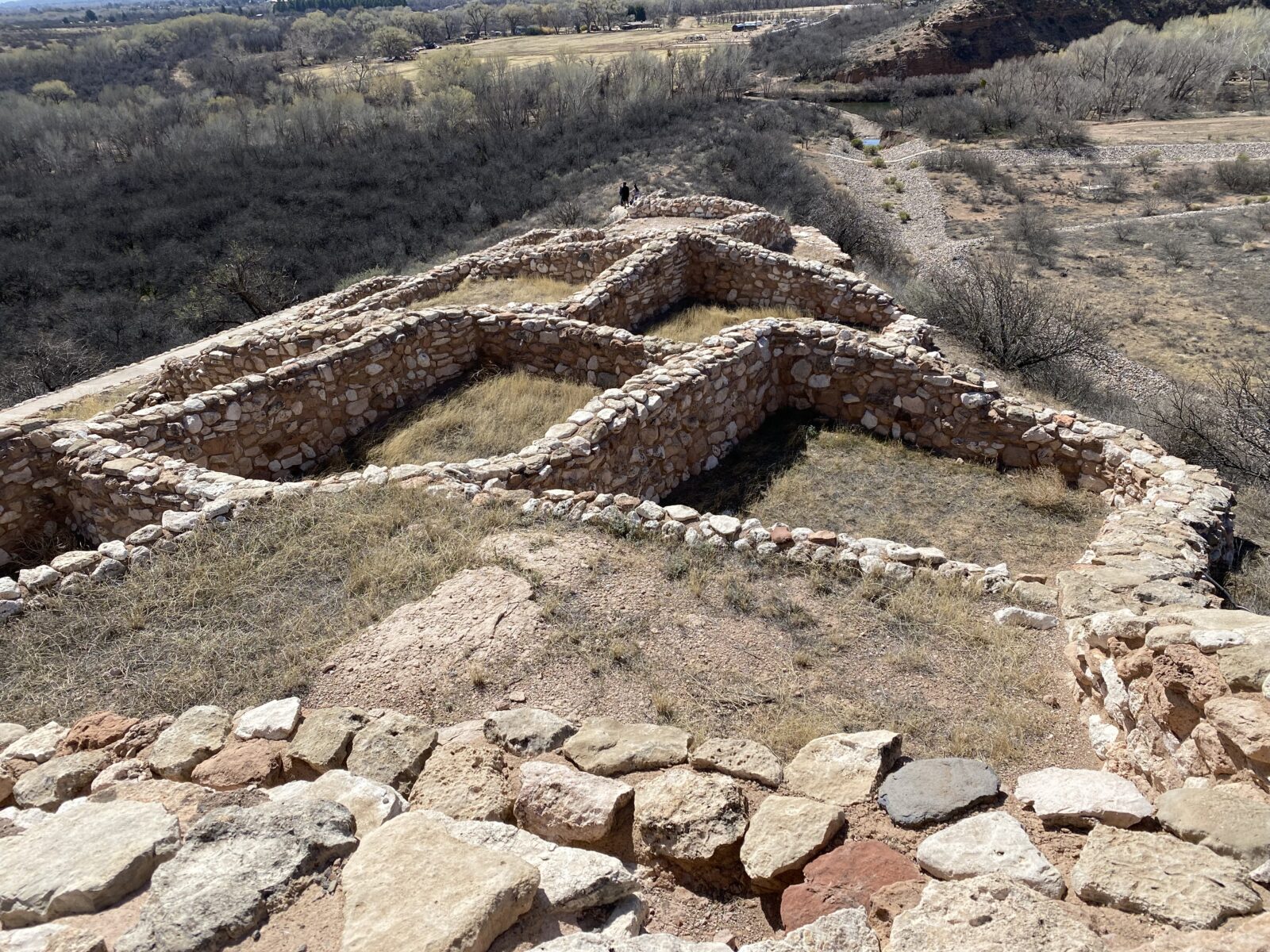


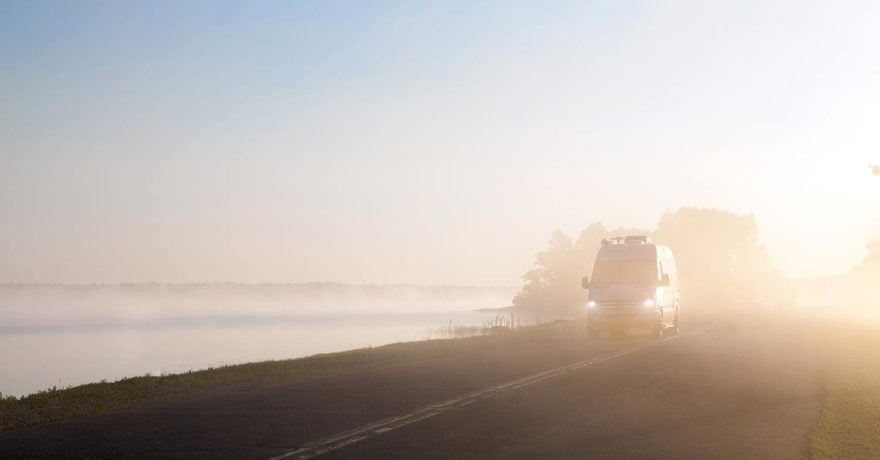
Comments